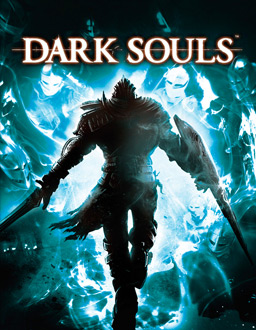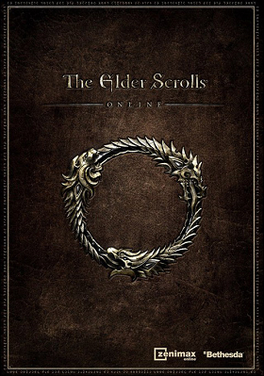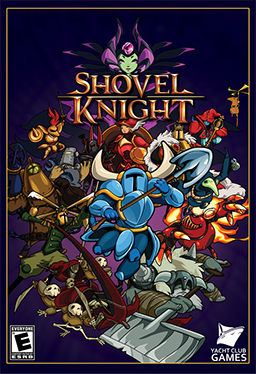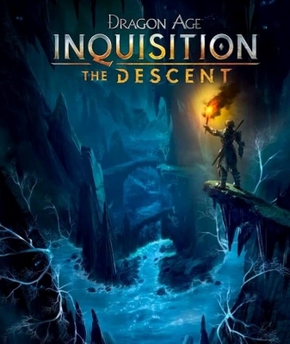
DmC: Devil May Cry is a 2013 action-adventure game developed by Ninja Theory and published by Capcom. Released in January for PlayStation 3, Xbox 360, and Windows, it is a reboot of the Devil May Cry series and set in a parallel universe to the mainline series.

Darksiders II is an action role-playing hack and slash video game developed by Vigil Games and published by THQ. It is the sequel to Darksiders and was released in August 2012 for Microsoft Windows, PlayStation 3, Xbox 360 and as a launch title for Wii U upon the console's North American and PAL regions release in November of the same year. The story follows the efforts of player character Death to clear the name of his brother, War, who stands accused of wiping out humanity. On a total budget of $50 million, it was one of the most expensive video games to develop of all time.

Dark Souls is a 2011 action role-playing game developed by FromSoftware and published by Namco Bandai Games. A spiritual successor to FromSoftware's Demon's Souls, the game is the first in the Dark Souls series. The game takes place in the kingdom of Lordran, where players assume the role of a cursed undead character who begins a pilgrimage to discover the fate of their kind. A port for Windows featuring additional content, known as the Prepare to Die Edition, was released in August 2012. It was also released for consoles under the subtitle Artorias of the Abyss in October 2012.

The Elder Scrolls Online, abbreviated ESO, is a massively multiplayer online role-playing game (MMORPG) developed by ZeniMax Online Studios and published by Bethesda Softworks. It was released for Windows and macOS in April 2014. It is a part of the Elder Scrolls series.

Rise of the Triad is a first-person shooter developed by Interceptor Entertainment and published by Apogee Software, LLC for Microsoft Windows in 2013. The game is a reboot of the original Rise of the Triad: Dark War published by the former Apogee Software in 1995.

Dark Souls II is a 2014 action role-playing game developed by FromSoftware. The second installment of the Dark Souls series, it was released for Windows, PlayStation 3 and Xbox 360 by FromSoftware in Japan and Bandai Namco Games internationally. Taking place in the kingdom of Drangleic, the game features both player versus environment (PvE) and player versus player (PvP) gameplay. Dark Souls II was released in March 2014 after some initial delays, with the Windows version being released the following month.

Guacamelee! is a Metroidvania action platforming video game developed and published by DrinkBox Studios, initially launched in April 2013 for platforms PlayStation 3 and PlayStation Vita and was later ported to Windows in August and to OS X and Linux in February 2014. The enhanced Super Turbo Championship Edition was released for Wii U, Windows, PlayStation 4, Xbox One, and Xbox 360 in July 2014 and later on the Nintendo Switch in October 2018. The game is inspired by traditional Mexican culture and folklore, like alebrijes and Day of the Dead.

Shovel Knight is a platform video game developed and published by Yacht Club Games. Development was crowdfunded and the game was released for Nintendo 3DS, Wii U, and Windows in June 2014. It was ported to OS X and Linux in September 2014, PlayStation 3, PlayStation 4, PlayStation Vita, and Xbox One in April 2015, Amazon Fire TV in September 2015, and Nintendo Switch in March 2017. Shovel Knight is inspired by gameplay and graphics of platformer games developed for the Nintendo Entertainment System.

A Hat in Time is a 2017 platform game developed by Danish game studio Gears for Breakfast and published by Humble Bundle. The game was developed using Unreal Engine 3 and funded through a Kickstarter campaign, which nearly doubled its fundraising goals within its first two days. The game was self-published for macOS and Windows in October 2017, and by Humble Bundle for the PlayStation 4 and Xbox One consoles two months later. A version for the Nintendo Switch was released in October 2019.

Rogue Legacy is a 2013 platform game with roguelike elements developed and published by Cellar Door Games. The game was released for Microsoft Windows, Linux, OS X, PlayStation 3, PlayStation 4, PlayStation Vita, Xbox One, Nintendo Switch, and iOS. A sequel, Rogue Legacy 2, was released on April 28, 2022 for Microsoft Windows, Xbox Series X/S and Xbox One.

Cuphead is a 2017 side-scrolling run and gun video game developed and published by Studio MDHR. The game follows its titular teacup-headed character who makes a deal with the Devil to pay casino losses by repossessing the souls of runaway debtors. In the game, up to two players control Cuphead and/or his brother Mugman to fight through several levels and boss fights; the game does not have a rigid narrative structure. As the game progresses, the protagonist acquires more power and abilities, eventually threatening the Devil himself. Players, however, can only equip a limited number of these abilities at a given time.

CastleStorm is a 2013 game developed by Zen Studios for Xbox 360, Windows, PlayStation 3, PlayStation Vita, and Wii U. A remastered version titled CastleStorm: Definitive Edition was released in 2014 for PlayStation 4 and Xbox One. A free-to-play mobile version titled CastleStorm: Free to Siege was released in 2014 for Amazon, Android, and iOS. The game also received a virtual reality adaptation for Oculus Rift, Samsung Gear VR, and PlayStation VR. A sequel titled CastleStorm 2 was released on July 31, 2020.

Dark Souls III is a 2016 action role-playing game developed by FromSoftware and published by Bandai Namco Entertainment for PlayStation 4, Xbox One, and Windows. The third and final entry in the Dark Souls series, it is played in a third-person perspective, and players have access to various weapons, armour, magic, and consumables that they can use to fight their enemies. Hidetaka Miyazaki, the creator of the series, returned to direct the game after handing the development duties of Dark Souls II to others.
Dark Souls is a dark fantasy action role-playing game series developed by FromSoftware and published by Bandai Namco Entertainment. It began with the release of Dark Souls (2011) and has seen two sequels, Dark Souls II (2014) and Dark Souls III (2016). The series was created by Hidetaka Miyazaki and has received critical acclaim, with its high level of difficulty being among its most discussed aspects, while the first Dark Souls is often cited as one of the greatest games of all time. By 2023, the series had shipped over 35 million copies outside of Japan. Other FromSoftware games, including Demon's Souls, Bloodborne, Sekiro: Shadows Die Twice, and Elden Ring, share several related concepts and led to the creation of the Soulslike subgenre.

Ni no Kuni II: Revenant Kingdom is an action role-playing game developed by Level-5 and published by Bandai Namco Entertainment. The game is a sequel to Ni no Kuni: Wrath of the White Witch, and was released for PlayStation 4 and Windows on March 23, 2018. The game was later released for the Nintendo Switch on September 17, 2021, and for Xbox One and Xbox Series X/S on March 21, 2023.
There are four pieces of downloadable content (DLC) that were released for Bungie's 2014 first-person shooter video game Destiny. Each package of downloadable content added new player versus environment (PvE) missions and player versus player (PvP) modes, new locales to visit, and new items for the player to make use of. The first expansion was The Dark Below in December 2014, which was followed by House of Wolves in May 2015. The third, The Taken King, was released in September 2015 and had the largest effect on the game, as it changed much of the core gameplay. Upon the release of the third expansion, retailers issued Destiny: The Taken King Legendary Edition, which included Destiny and all DLC up to and including The Taken King. In December 2015, Destiny shifted to an event-based model, featuring more periodical limited-time events. The fourth and last expansion called Rise of Iron released in September 2016. Upon release of the fourth expansion, retailers issued Destiny: The Collection, which includes Destiny and all DLC up to and including Rise of Iron.

Dark Souls III: The Ringed City is the second of two downloadable content (DLC) packs for the 2016 action role-playing video game Dark Souls III. Released on March 27, 2017, the content pack was developed by FromSoftware and published by Bandai Namco Entertainment. It drew favourable reception from critics, with several seeing it as a fitting end to the Dark Souls series.

Hollow Knight is a 2017 Metroidvania video game developed and published by independent developer, Team Cherry. The player controls the Knight, an insectoid warrior exploring Hallownest, a fallen kingdom plagued by a supernatural disease. The game is set in diverse subterranean locations, featuring friendly and hostile insectoid characters and numerous bosses. Players have the opportunity to unlock new abilities as they explore each location, along with pieces of lore and flavour text that are spread throughout the kingdom.

Dragon Age: Inquisition – The Descent is a downloadable content (DLC) pack developed by BioWare and published by Electronic Arts for the 2014 action role-playing video game Dragon Age: Inquisition. It was initially released for Xbox One, PlayStation 4, and Microsoft Windows through Electronic Arts' digital distribution platform Origin on August 11, 2015. The pack follows the Inquisition's exploration of the Deep Roads, a subterranean network of underground pathways and tunnels built by dwarven civilizations of yore, to investigate the occurrence of strange earthquakes which is disrupting international trade of the precious material lyrium.

Assassin's Creed III: The Tyranny of King Washington is a downloadable content (DLC) expansion pack developed and published by Ubisoft for the 2012 action-adventure video game Assassin's Creed III. Set after the events of the base game, it follows its main playable character, Ratonhnhaké:ton / Connor, as he awakens in what appears to be an alternate reality where the game's events involving him have never happened. He is tasked to find and defeat a fictionalized version of George Washington, who is empowered but mentally corrupted by an otherworldly artifact. After crowning himself King of the newly-founded United States of America, Washington began to enslave the population of the American frontier and massacre those who resist his tyranny. Connor gains new mystical abilities over the course of the pack's narrative as he attempts to stop Washington and return to his original timeline.





















